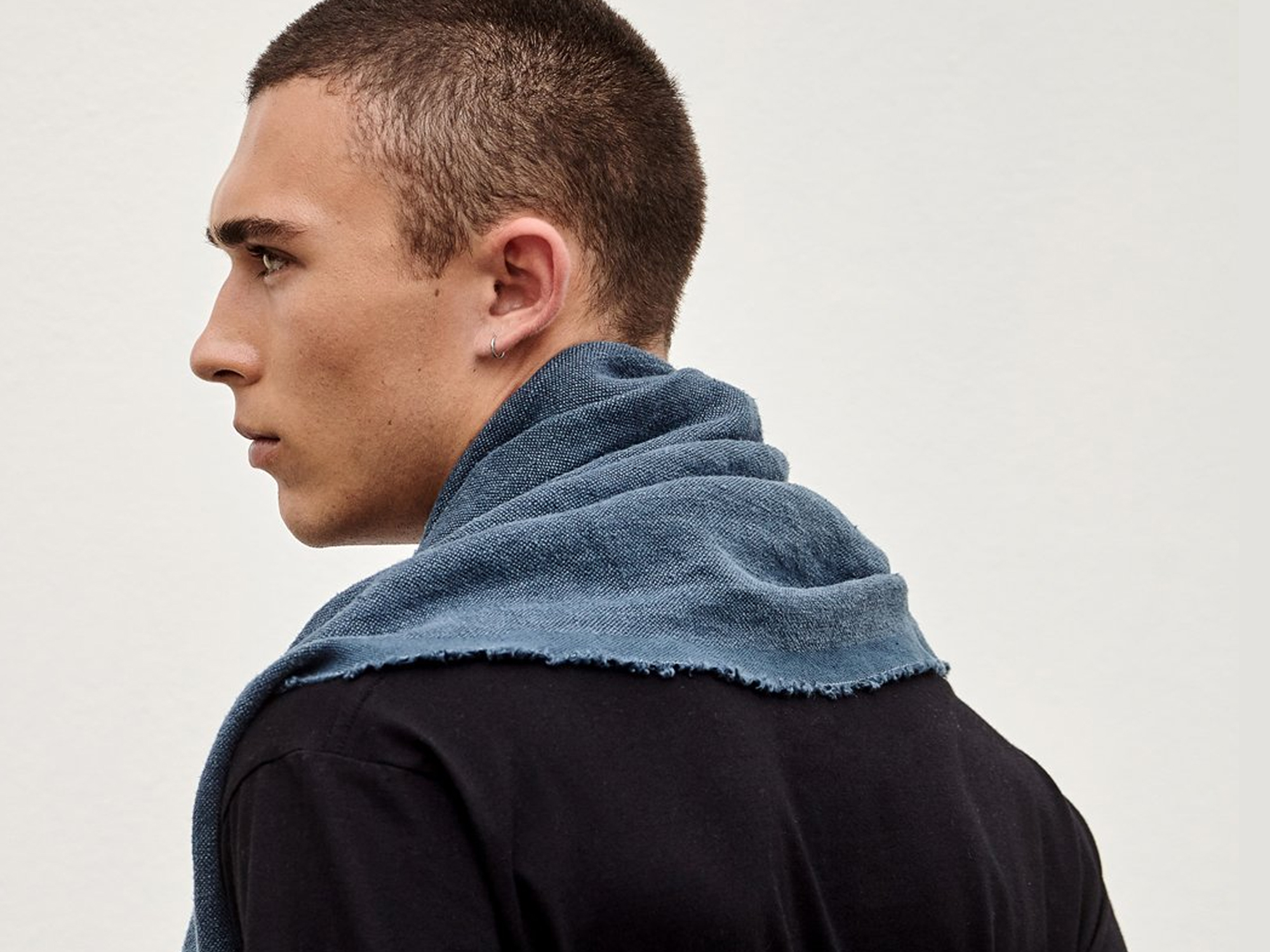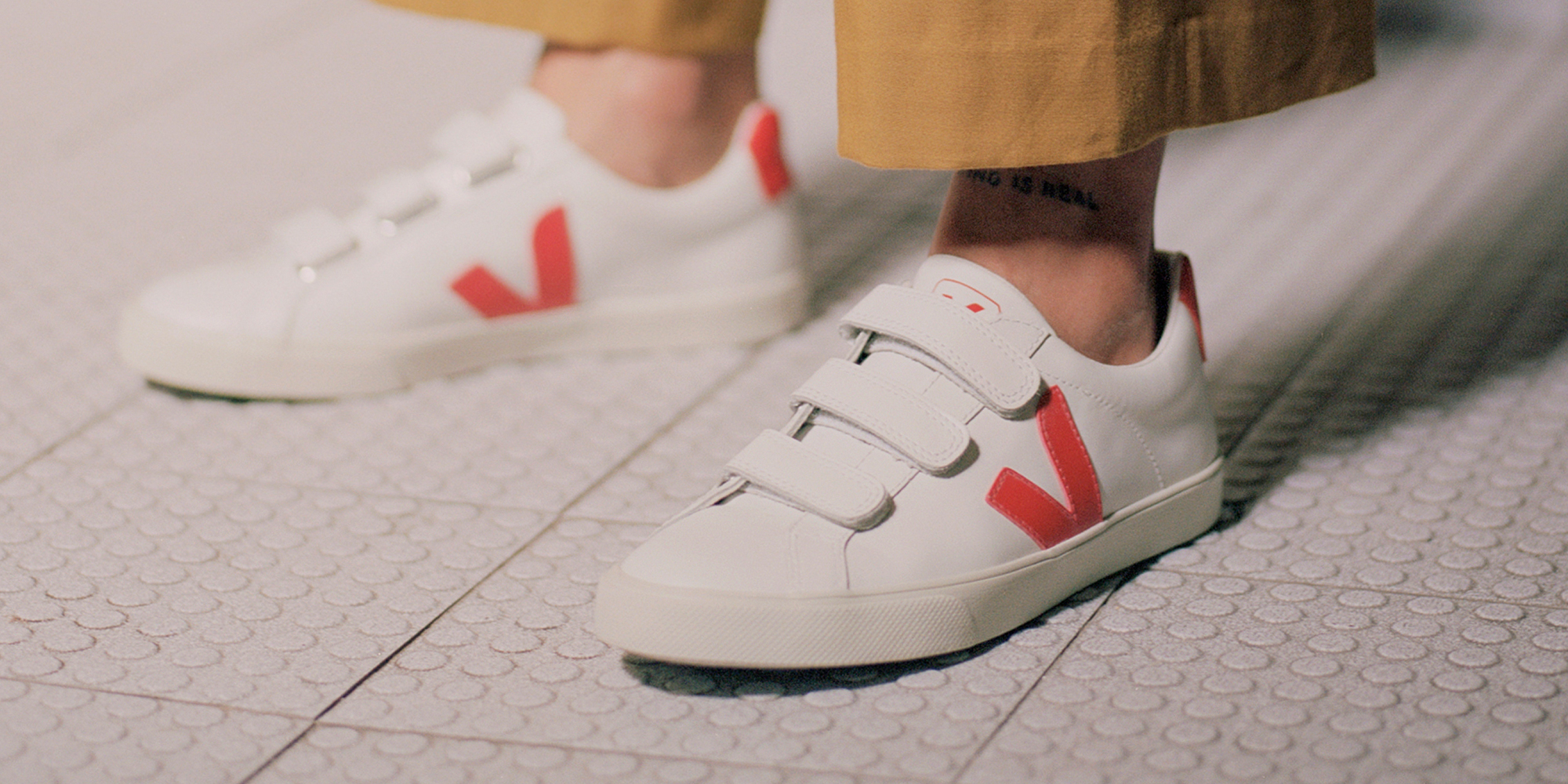Lots of materials are marketed as sustainable, but what’s really green and what’s merely greenwashing? We’ve rounded up eight fabrics and fibres that live up to the hype including plant-based recycled cotton, organic linen, organic hemp, and TENCEL Lyocell; animal-derived recycled wool, and innovative fibres ECONYL, Bananatex, and CIRCULOSE.
The great fabric debate
What’s in a label? What do we look for when we’re choosing lower-impact fabrics? Whether you’re a clothes maker or a fashion lover who doesn’t love fashion’s impacts, selecting more responsibly-made fabrics is one area where our choices can have a tangible impact on the wellbeing of people, the planet, and animals.
But there is a lot of debate about which fabrics are better. Does plant-based always equal good and synthetic equal bad? What new and innovative materials are backing up their claims with evidence? And what happens when we wash or dispose of these materials? Let’s find out.
Plant-based fibres
Recycled cotton
Cotton is one of the most common fabrics in the world. This plant-based fibre is light and breathable, which makes it a wardrobe staple. But growing cotton can be problematic: conventional cotton is one of the thirstiest and most chemical-intensive crops to grow. It requires a lot of pesticides and, as a result, harms the planet and the people who grow it.
Organic cotton can be a lower-impact alternative to conventional cotton, and has been booming in recent years. In theory, it aims to minimise the environmental impact of cotton production by trying to remove harmful pesticides and other chemicals from the production process. GOTS certified cotton is often the go-to recommendation for consciously grown cotton that is gentler on the planet and the people who create it. However, organic cotton certification recently came under fire when it was discovered much of the fibre marketed as organic may not be so: according to a report by The New York Times, “at the heart of the problem is an opaque certification system rife with opportunities for fraud.”
If you’re looking for the most responsible cotton, go for recycled. Recycled or upcycled cotton is made using post-industrial and post-consumer cotton waste. According to the Textile Exchange’s Preferred Fiber and Materials Market Report 2022, recycled cotton is a lower-impact alternative to both conventional and organic cotton. It has the potential to help reduce water and energy consumption, as well as help keep cotton clothes out of landfills.
Organic hemp
It seems like hemp is everywhere at the moment. Marijuana’s “sober cousin” is extremely versatile: it’s used as a food, a building material, in cosmetics, and it has been cultivated and used for hundreds of years as a fabric.
The great thing about hemp is that it’s grown all around the world, and it requires very little water, no pesticides, and naturally fertilises the soil it grows in—making it much better for the environment than other crops. However, it’s important to be aware that hemp does not always mean organic, and many farmers still use environmentally damaging fertiliser. When going for hemp, make sure it’s organic and thoroughly study the brand you’re considering buying from.
One of the oldest fibres in the world, hemp helps keep you warm in winter, cool in summer, and gets softer the more you wash it, making it a great option for pieces that will stay in your wardrobe rotation for years to come.
Organic linen
Linen is another plant humans have been growing for centuries. Similar to hemp, it’s derived from a very versatile crop: the flax plant. Linen requires minimal water and pesticides, and even grows in poor-quality soil. Plus, every part of the plant is used, so nothing is wasted.
Because of the dense nature of the fibre, to get a pure white linen, it has to go through a heavy bleaching process. Sticking to its natural-toned hues will ensure a more environmentally-friendly garment afterlife.
Linen is strong, naturally moth resistant, and—when untreated—fully biodegradable. In addition to being good for the planet, it is also light and can withstand high temperatures, absorbing moisture without holding bacteria. What’s not to like?
TENCEL Lyocell
TENCEL Lyocell is a man-made cellulosic fibre (MMCF) created by dissolving wood pulp. The fibre is produced by Austrian company Lenzing AG. It’s been growing in popularity recently, and is said to be 50% more absorbent than cotton, and requires less energy and water to produce. Plus, the chemicals used to produce the fibre are managed in a closed-loop system. This means the solvent is recycled which reduces dangerous waste.
There’s another version of the fabric, called Refibra, made from upcycled cotton scraps. The cotton scraps are transformed into cotton pulp, which is then added to conventional dissolving wood pulp.
TENCEL has moisture-wicking and anti-bacterial properties, making it a perfect activewear alternative to pesky polyester.
Animal-derived materials
Recycled wool
Wool is a durable animal-derived fibre known for its longevity, warmth, and comfort. In its original form, wool is a resource-intensive material to produce and has associated ethical concerns.
Recycled wool, like that traditionally processed in Italy by Manteco, reduces the environmental and ethical impacts significantly and, with so much of the fibre already in circulation, is becoming a desired recyclable option.
It’s also diverse and easy to blend with other fibres such as fleece. The industry is beginning to see less demand for virgin wool with the higher value placed on discarded garments or offcuts in the manufacturing process.
Futuristic and innovative fabrics
ECONYL
Another recycled material to consider is ECONYL. This yarn, created by Italian firm Aquafil, is derived from recycled synthetic waste such as industrial plastic, waste fabric, and fishing nets from the ocean. Despite being derived from recycled materials, ECONYL yarn is said to be of the same quality as virgin nylon yarn.
The manufacture of ECONYL uses less water and generates less waste than the manufacture of conventional nylon yarn. In the manufacture of ECONYL, waste is collected, cleaned, and shredded, and then depolymerised to extract a raw material called caprolactam. The caprolactam is then repolymerised and transformed into ECONYL yarn.
A clear downside of ECONYL is—like other synthetics—it emits microfibres. While this means it’s not the best choice for clothing that is frequently machine washed, it can be a practical and lower-impact option for shoes or clothing that is rarely washed or generally handwashed like activewear, swimwear, and outerwear. Pick yourself up a Guppy Bag for when you must machine wash.
Bananatex
Launched in 2018 by Swiss brand QWSTION, Bananatex is the world’s first durable fabric made purely from banana plants. Cultivated in the Philippines through a mix of agriculture and forestry, the banana plant is said to be self-sufficient, and requires no pesticides, fertiliser, or extra water.
In addition to winning a variety of international sustainability awards, such as the Green Product Award 2019 and the German Sustainability Award Design 2021, the Bananatex fabric was certified Cradle to Cradle Gold.
In short, Bananatex has the potential to be a truly circular alternative to synthetic fabrics already on the market, contributing to reforestation in areas once eroded due to monocultural palm plantations while enhancing biodiversity and the economic prosperity of its farmers.
CIRCULOSE
CIRCULOSE is a new material made by recycling cotton from worn-out clothes and production waste.
Made from 100% recycled textiles, like that worn-out pair of jeans at the back of your closet, it is a “dissolving pulp” that can be used to make viscose, lyocell, modal, acetate, and other types of regenerated fibres. These fibres are then spun into yarns, woven or knitted into fabrics, and finally cut and sewn into new high-quality textile products.
By using existing products and materials, CIRCULOSE embodies circular fashion principles and “closing the loop”, a crucial component of a more sustainable fashion industry.




















